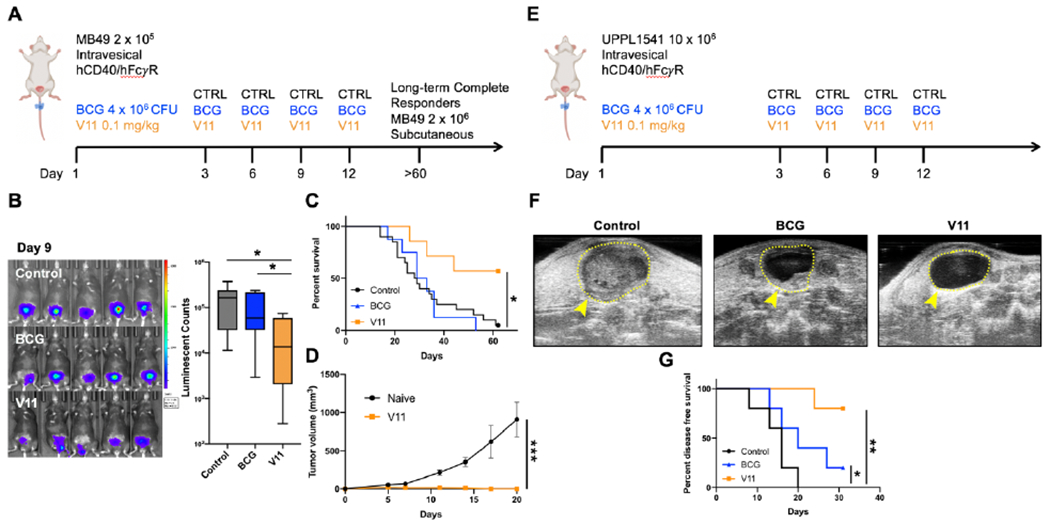Figure 4:

Intravesical Fc-enhanced anti-CD40 agonist antibody 2141-V11 reduces tumor burden, improves survival, and induces long-lasting anti-tumor immunity.
A, Schematic of the intravesical treatment of humanized hCD40/FcγR mice bearing orthotopic MB49 bladder tumors. B, Representative intravital luciferase imaging and quantitation of the bladders of mice treated with control (n = 6 independent animals), BCG (n = 8 independent animals), or 2141-V11 (V11; n = 8 independent animals) day 9 post tumor implantation. C, Survival of mice treated as outlined in (A). D, Long-term treatment responders (mice surviving >60 days after initial tumor challenge) were re-challenged with MB49 tumor cells subcutaneously. Tumor volume was monitored over 3 weeks and compared to naive mice receiving the same MB49 tumor cells. E, Schematic of orthotopic UPPL1541 tumor implantation and treatment with control (n = 5 independent animals), BCG (n = 5 independent animals), and 2141-V11 (V11; n = 5 independent animals). Longitudinal ultrasound imaging twice weekly was used to track bladder tumor growth. F, Representative ultrasound images of bladders at day 20 post tumor implantation. The boundaries of the bladder are outlined by a yellow dashed line. Contrast within the bladder space, marked by yellow arrowhead, indicates abnormal growth. G, Disease-free survival of mice treated as outlined in (E). Detection of enhanced contrast within the bladder space by serial ultrasound imaging was used to determine bladder tumor growth longitudinally. For E, One-way ANOVA with Tukey’s test was used to calculate statistical significance. For C and G, Log-Rank test was used to calculate statistical significance. For D, Two-tailed t-test was used to calculate statistical significance. * p < 0.05, ** p < 0.01, *** p < 0.001. All data are plotted as mean ± s.d. Results shown are representative of 2 independent experiments.
